Frequently Asked
Questions



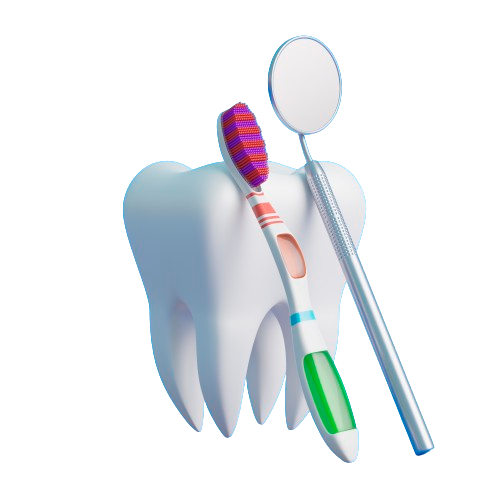
Yes. Please arrive 10-15 minutes early to fill out any
Brushing: Brush your teeth gently, paying special attention to the areas where your teeth and gums meet. Clean every surface of every tooth. Use the tip of your brush to clean behind your upper and lower front teeth.
Flossing: Take a piece of floss about 18 inches long and wrap it around your middle fingers. Using a clean section of floss each time, wrap the floss into a C shape around a tooth. Wipe it over the tooth, from base to tip, a couple of times. Repeat on each tooth. After flossing, roll it up in a tiny ball and put it in the garbage. Never flush floss down the toilet.
Ask yourself the following questions:
- Do I floss every day?
- Do I brush twice a day with a fluoride toothpaste and follow my dentist’s instructions on how to brush properly?
- Do I eat a well-balanced diet, including food from all food groups, and limit sweets and sticky foods?
- Do I smoke?
- Do I have a history of cavities or gum disease?
- Is my overall health good?
It’s vital that all adults engage in daily brushing and flossing, but to take your oral hygiene to the next level, follow a handful of particular steps to good dental health.
These include:
- Using products that contain fluoride.
- Limiting snacks that are high in sugar.
- Eating a balanced diet of fruits and vegetables.
- Avoiding tobacco in any form.
Flossing reduces the number of bacteria in your mouth. There are millions of these microscopic creatures feeding on food particles left on your teeth. These bacteria live in plaque which can be removed by flossing. Brushing your teeth gets rid of some of the bacteria in your mouth. Flossing gets rid of the bacteria the toothbrush can’t get to. That’s the bacteria hiding in the tiny spaces between your teeth. If you do not floss, you allow plaque to remain between your teeth. Eventually it hardens into tartar.Plaque can be removed by brushing. Only the dentist can remove tartar.
Ask your dentist to show you the proper way to floss. You will both notice the difference at the next cleaning appointment.
Make it fun! If you are enthusiastic about brushing your teeth, your children will also be enthusiastic. Children want to do the things their parents do. If your children see you brushing your teeth and displaying good dental habits, they will follow. Ask the dentist for other creative ways to get children to brush their teeth.
Getting your children to brush starts with taking them to the dentist at an early age. All children should be seen by their first birthday or 6 months after the eruption of the first tooth.
Buy toothbrushes with soft bristles. Medium and firm ones can damage teethand gums. Use soft pressure, for 2 minutes, two times a day.
Both powered and manual toothbrushes clean teeth well. Manual brushes with mixed bristle heights or angled bristles clean better than those with all flat, even bristles. Powered toothbrushes may be easier if you have trouble using your hands.
Set a reminder to replace your toothbrush every 3-4 months. Toss it sooner if the bristles look bent or splayed out. Bent bristles don’t clean as well. (They’re also a sign you may be brushing too hard.)
Most toothpastes will clear away bacteria growth and acids from food and drinks. Toothpastes with the American Dental Association (ADA) Seal of Acceptance always have fluoride, which strengthens and protects teeth. If you want a non-fluoride option, stores carry toothpastes and powders made with natural ingredients that don’t have ADA testing and approval.
If cold or hot food or drinks make you cringe, pick a toothpaste for sensitive teeth and let your dentist know.
There’s no getting around the need to get around your teeth daily with dental floss. It clears food and plaque from between teeth and under the gumline. If you don’t, plaque hardens into tartar, which forms wedges and widens the space between teeth and gums, causing pockets. Over time, gums pull away and teeth loosen. Either waxed or unwaxed floss will do the job. Using floss picks or interdental brushes is another easy option.
Mouthwashes for cavity protection, sensitivity, and fresh breath may help when you use them with regular brushing and flossing — but not instead of daily cleanings. Your dentist can recommend the best type for you.
Some people need twice-daily rinses for gum health or alcohol-free washes for dry mouth.
Kids under 6 shouldn’t use mouthwash to avoid the chance of them swallowing it.
A mouthguard can prevent injuries to your face and teeth. Most people benefit from wearing a mouthguard when playing any sport. You should wear one whether you are playing professionally or just on weekends. Do what you can to preserve your smile and your health. The best mouthguards are custom-fitted by your dentist. This is especially important if you wear braces or fixed bridgework.
Endodontic (root canal) treatment treats the inside of the tooth. Endodontic treatment is necessary when the pulp becomes inflamed or infected. The inflammation or infection can have a variety of causes: deep decay, repeated dental procedures on the tooth, faulty crowns, or a crack or chip in the tooth. In addition, trauma to a tooth may cause pulp damage even if the tooth has no visible chips or cracks. If pulp inflammation or infection is left untreated, it can cause pain or lead to an abscess.
During root canal treatment, the inflamed or infected pulp is removed and the inside of the tooth is carefully cleaned and disinfected, then filled and sealed with a rubber-like material called gutta-percha. Afterward, the tooth is restored with a crown or filling for protection. After restoration, the tooth continues to function like any other tooth.
Today, getting root canal treatment is often no more uncomfortable than having a filling. In fact, root canal treatment doesn’t cause pain but actually relieves it. Advances have made the treatment a virtually pain-free experience, many times accomplished in a single visit. dentist understand a great deal about pain management. With modern techniques and anesthetics, the vast majority of patients report that they are comfortable during the procedure.
No. While x-rays will be necessary during your endodontic treatment, we use an advanced non-film computerized system called digital radiography that produces radiation levels up to 90 percent lower than those of already low dose conventional dental x-ray machinery.
Some patients may experience tooth pain initially and then it goes away on its own or with the help of antibiotics. Just because it has stopped hurting doesn’t mean it is no longer infected. Root canal treatment is designed to disinfect the inside of the tooth (the source of infection) and stop the spread of infection.
Some patients may never experience pain with an infected tooth. In fact, root canal infection is often discovered through routine radiographs and/or clinical examination. The tooth may have a chronic infection that the body has accommodated enough to not have gone beyond the patient’s pain threshold.
Prior to performing any root canal, the dentist will thoroughly examine all radiographic and clinical findings to determine if a root canal is indicated.
Saving your natural teeth, if possible, is the very best option. Nothing can completely replace your natural tooth. An artificial tooth can sometimes cause you to avoid certain foods. Keeping your own teeth is important so that you can continue to enjoy the wide variety of foods necessary to maintain the proper nutrient balance in your diet. If your dentist recommends extraction, ask whether root canal treatment is an option.
Endodontic treatment, along with appropriate restoration, is a cost-effective way to treat teeth with a damaged pulp and is usually less expensive than extraction and placement of a bridge or an implant. Endodontic treatment also has a very high success rate. Many root canal treated teeth last a lifetime. Placement of a bridge or an implant will require significantly more time in treatment and may result in further procedures to adjacent teeth and supporting tissues.
A study published by the National Institutes of Health, conducted by dental student Amy Wong in 2015, found that most single root canals take less than one hour. She also found that procedures involving multiple root canals last an average of fewer than two hours.
Her exact findings report that the average time needed to perform a single root canal is 37 minutes and the average time for appointments involving multiple root canals is 73 minutes.
When your root canal treatment your dentist will decide on what type of restoration is necessary to protect your tooth.
Saving your tooth through endodontic treatment is less expensive and less invasive than an extraction and replacement with a bridge or implant. Cost will depend on your dental insurance coverage. Our staff will help with getting your insurance information and let you know the cost of your root canal. If you do not have any dental insurance, we offer discount options or a payment plan with Care Credit.
If you don’t have the procedure performed, you may lose the tooth. The decay and infection are likely to spread, and may even result in additional tooth decay.
If the problem is not remedied in time, you could lose teeth that are close to the original source. But, you may have been more severe issues than noticeable tooth decay, or tooth loss.
Once tooth infection begins to spread, it can travel to other area s in your body wreaking havoc. In some cases, an abscessed root canal has led to brain damage or even death.
that’s why it’s imperative that you treat and resolve the infection as soon as possible.
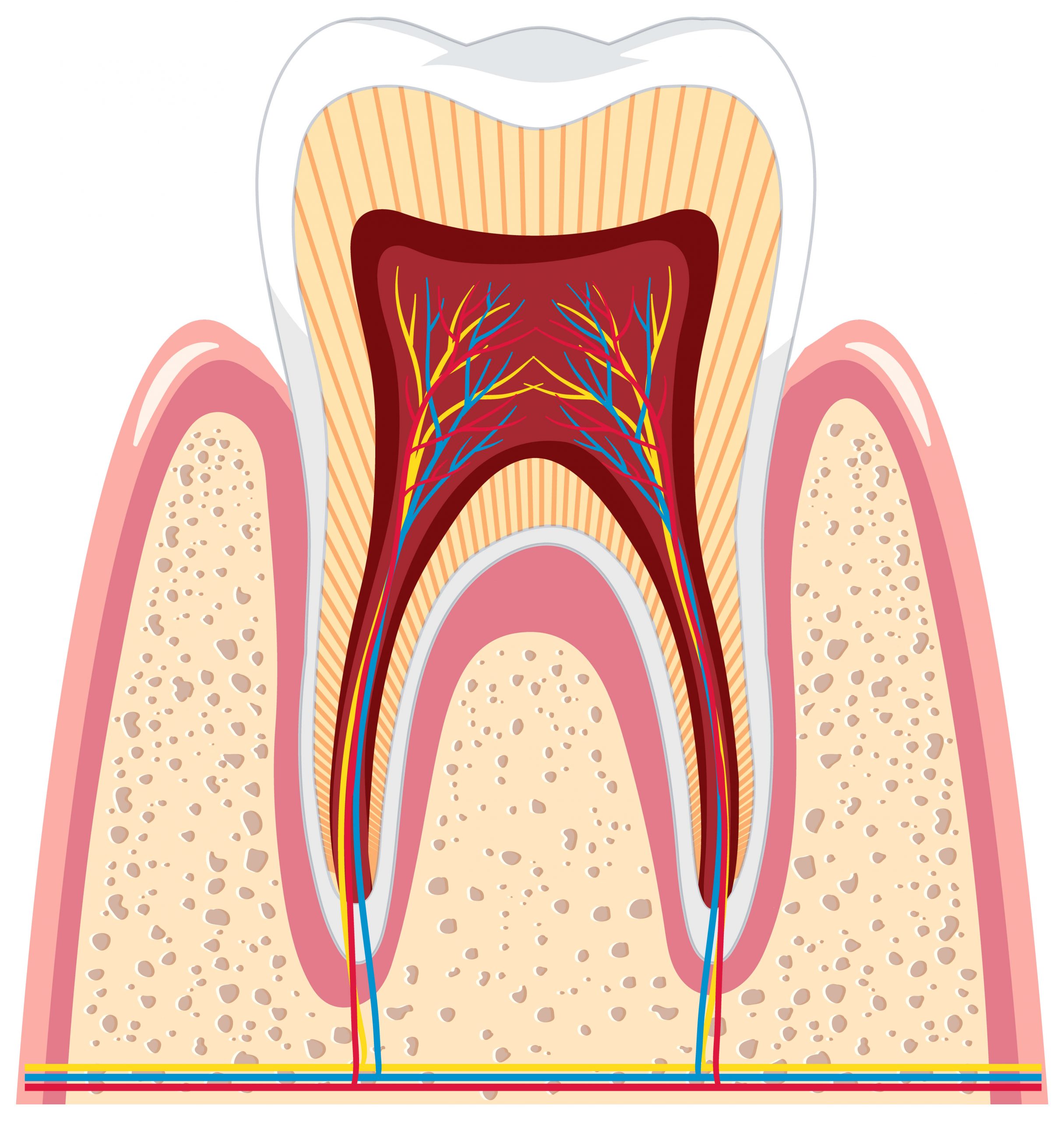
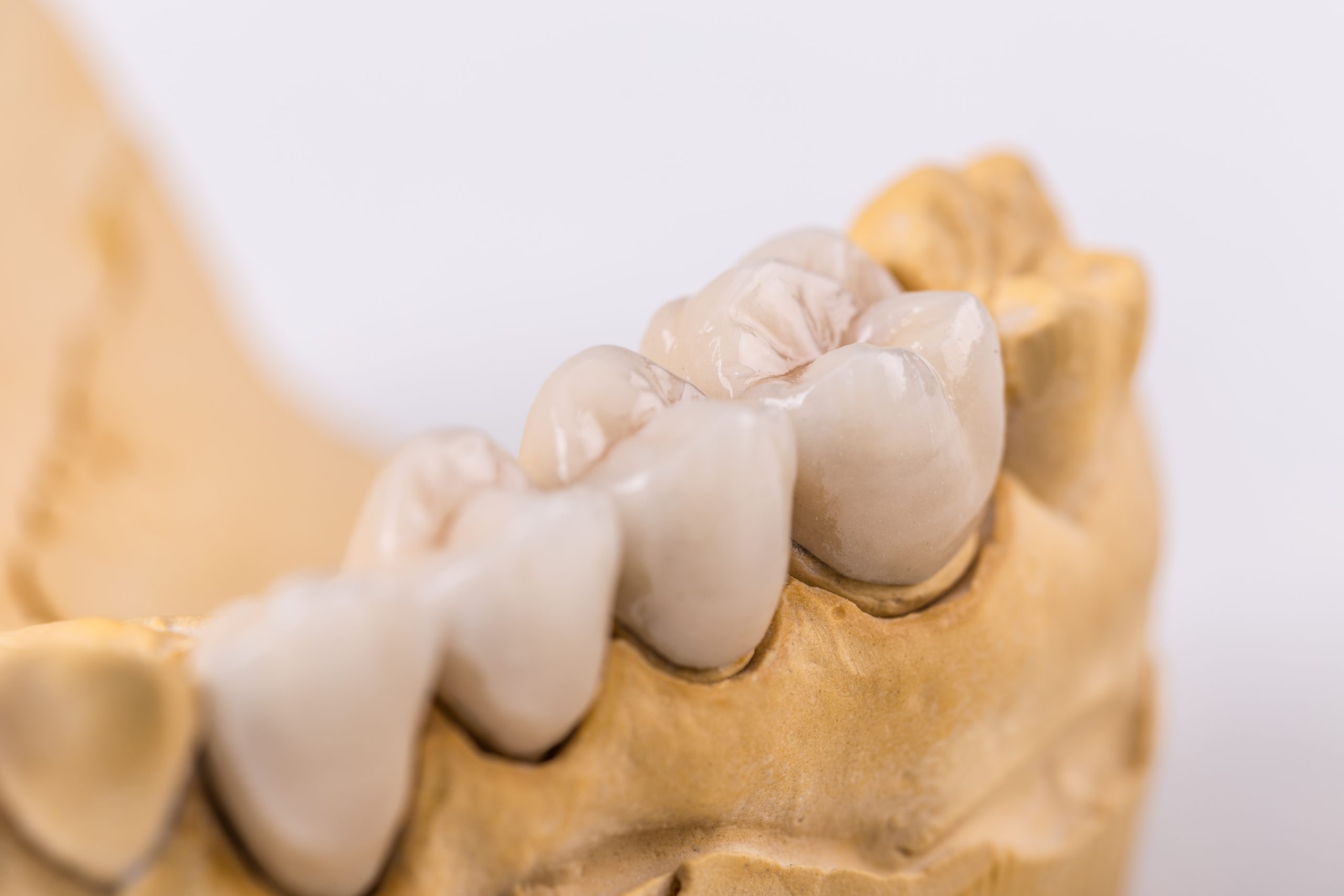
Today’s crowns and bridges are made of natural-looking composite materials that make them virtually indistinguishable from your natural teeth.
On average fixed restorations lasts 7-15 years. This time can be reduced if you do not clean the teeth properly and allow gum disease or dental decay to affect the teeth. Also trauma can damage restorations in the same way it damages natural teeth.
Crown placement is typically completed in two visits. First, we will remove a thin layer of enamel coating and shape the tooth to provide room for the crown. This process allows the crown to be placed without crowding neighboring teeth or creating an uneven bite. Then we make an impression of the teeth, which is sent to an on-site lab where the crowns will be made from the most advanced materials for long-lasting durability.
The dentist will fit a temporary crown, which is crafted from resin, to protect your tooth while the permanent crown is being made. At the second visit, the temporary crown will be removed and the tooth will be carefully cleaned before the permanent crown is applied using a strong adhesive.
No, good crowns look highly realistic and can match to you existing teeth very well. If however you want a Hollywood smile you can have that also.
This will depend on your situation and clinical needs. A good quality restoration will take several weeks to be manufactured meaning that you will need at least two appointments several weeks apart. You have a temporary crown or bridge in the mean time. Quality work cannot be done in short spaces of time.
A study published by the National Institutes of Health, conducted by dental student Amy Wong in 2015, found that most single root canals take less than one hour. She also found that procedures involving multiple root canals last an average of fewer than two hours.
Her exact findings report that the average time needed to perform a single root canal is 37 minutes and the average time for appointments involving multiple root canals is 73 minutes.
When your root canal treatment your dentist will decide on what type of restoration is necessary to protect your tooth.
No, only the best quality crowns, bridges and veneers are used for all patients. We use different labs for different cases because some labs can recreated teeth for younger people, older people, or bleached teeth better than others. Under no circumstance do we use inferior medical devices even if they are cheaper.
The newer all porcelain crowns are an esthetic improvement over older, porcelain fused to metal crowns as if the gumline would recede, the older crowns often showed a metal edge to the crown that originally was hidden from view. Since all porcelain crowns have no metal, no markings are evident if the gum line recedes.
If a tooth that requires root canal therapy discolors, it is an indication that the nerve inside the tooth had died and blood pigments have broken down and been absorbed into the calcified tooth structure. By placing an all ceramic porcelain crown on the tooth, it can restore the tooth to match its neighbors.
If your crowns are worn down or damaged, give us a call so that we can plan replacements. We may need to remove the crown and provide you with a new temporary crown until your new permanent crowns are complete.
If you’ve had your crowns for several years, you may be troubled by their aesthetics. Older materials used to create crowns were not as natural-looking and lifelike as today’s modern crowns. Metal crowns and porcelain-fused-to-metal may be a giveaway that you’ve had dental work done, and we completely understand that you want your smile to look its best.
We are happy to examine your teeth and provide a recommendation as to whether your crowns should be replaced.
Because temporary crowns are made from acrylic, which is less strong than the metal, ceramic or porcelain material of a permanent crown, you must take extra precautions. Limit the amount of chewing you do on the side of your mouth where your temporary crown is located. Avoid chewing on hard candies, nuts and very crunchy fresh vegetables such as carrots on the same side of the mouth as your temporary crown. Until your permanent crown is in place, don’t eat sticky desserts or candy, including caramels, licorice, jelly beans, taffy, toffee and gummy bears, as they could pull the temporary crown off your tooth. Avoid chewing gum for the same reason.
It is important to maintain excellent oral hygiene, making sure to brush and floss twice a day. Avoid biting on hard foods like nuts and candy that can potentially fracture the restoration.
Whats the difference between different types of crowns like Procera, empress, Zirconia? Crowns, veneers and bridges can be made of various metals, high strength ceramics or a combination of both. Different types are suitable for different people and in different areas of the mouth, and different aesthetic demands. Dr. Fitzgerald can advise what would be the best solutions for your needs. The quality and appearance of your crown is not dependent on what its made of, its dependent of the skill and artistry of how its made.
Dental implants are the ideal way to replace missing or weakened teeth. Most adult patients are good candidates for implants because they can help to prevent the remaining teeth from moving or loosening as a result. Implants are permanent and serve as a good alternative to dentures for anyone with an otherwise healthy mouth and jaw.
A dental implant by itself is not a tooth! A dental implant. is a prosthesis used to replace missing teeth. Essentially, it is a small titanium post/fixture that is inserted into the jawbone, on top of which a single crown (cap), a fixed bridge, a partial denture, or full denture can be attached. Once the implant integrates to your bone, a structure called an abutment is connected to the implant and then the artificial tooth/teeth are attached. Therefore, there are 3 parts to an “implant tooth”: the dental implant itself, the abutment, and the artificial tooth.
Our patients tell us that there is very little to no discomfort associated with the placement of an implant, and there is minimal to no swelling. General anesthesia is available for those who choose not to be awake during the procedure.
In many cases, implants can be placed and a temporary tooth can be made at the same time as the tooth is removed. In other cases, the implants are placed and have to heal for several months before placing the final tooth. The dental implant procedure usually takes 3 months for the lower jaw and 6 months for the upper jaw for the implant to fully integrate with your bone. However, everyone heals differently, so Dr. yakin and our team will monitor your progress closely. We are 100% dedicated to the care we provide in our office.
You will not need to go without replacement teeth. If the implants are not provisionalized immediately with temporary teeth, then a temporary prosthesis can be made for you. If your teeth were already missing, you may continue using your removable prosthesis with minor adjustments for your comfort during the healing period.
Yes, you will need to continue to visit your dentist on a regular basis for hygiene. It is important to maintain your oral health.
Unlike natural teeth, dental implants are not susceptible to dental disease such as decay; however, the health of the gums is vital to maintaining lasting implant success. Conscientious home care by the patient and regular professional cleanings and check-ups are essential elements for dental implant sustainability. Each patient is different, and success relies upon diagnosis and planning, medical history, and a variety of other factors
No, you are never too old. Patients over 90 years of age have replaced loose partials and full dentures with implant-supported restorations and the comment we hear most is “I wish I had done this sooner!” They are enjoying the benefits of easier chewing, speaking and a better quality of life.
We all put up with a lot of things we don’t think will change or improve, but based on the remarks we’ve heard from past and present patients, dental implants have opened up a new world to them. It is also important to keep in mind that your jawbone will diminish over time without implants. Dental implants stimulate the bone as natural teeth do, thus keeping the bone healthy.
Our patients tell us they’ve had tremendous improvements in their ability to chew foods and they are now able to chew and eat what they couldn’t before implant placement.
Tooth loss leads to bone loss, which may require a more complicated treatment in the future. You will also have to continue to get your removable prosthesis or denture adjusted, relined or even replaced from time to time. The attachments on a partial tug on adjacent teeth and your chewing ability will not be improved. In addition to that, there will be costs for future denture adhesives and cleaners. Your denture will cause you soreness and pain and may lead to a worsened condition as the jawbone deteriorates.
The cost of implants varies depending on the number of implants you need, the condition of your teeth and jawbone, and the type of replacement teeth your dentist builds. Often the cost is not much more than the cost of permanent bridgework and our office has a “Pay It Once” Policy.
The implant process requires three specialists: a surgeon to place them, a restorative dentist to design the replacement teeth, and a laboratory to make them to the dentist’s prescription. Precise implant components are ordered specifically for your mouth. Much time and effort goes into planning and customizing every step to reproduce your missing teeth and preserve or reconstruct your jawbone, gum tissue and teeth. This treatment is designed to last for many years, when properly maintained.
Humans are “blessed” with 2 sets of teeth (baby teeth and adult/permanent teeth). When a single permanent tooth or multiple teeth are lost due to dental decay or gum disease, dental implants can now replace them as the 3rd set of fixed teeth! Dental implants can last a lifetime and can improve your appearance, your confidence, and your ability to eat the foods you like, and participate in an active lifestyle, without worrying about your teeth. Dental implants are made of titanium and can never get dental decay!
Like any minor oral surgical procedure, there is a risk of infection, inflammation, and pain, but your dentist will discuss how these can be managed for your specific situation. If there is no available bone to place the implant, then bone and gum grafting procedures may be required, which can increase the cost of your treatment. However, the upfront investment can pay off in the long term.
It varies from individual to individual and with health and habits. For a healthy individual with good oral hygiene and good health, dental implants are predictably successful with reported success rates above 90-95%.
All-on-4® is a trademarked treatment procedure that essentially involves replacement of all missing teeth in one jaw by using only 4 implants. This procedure is especially beneficial in patients who have lost a lot of bone in the back areas of the mouth.
All-on-4® is a trademarked treatment procedure that essentially involves replacement of all missing teeth in one jaw by using only 6 implants.
Dentures cannot be “made into implants”. Implants are metal screws placed into the jawbone to help anchor and support artificial teeth (dentures). It may be possible to have implants placed beneath existing dentures to aid in the stabilization and support for those dentures. This could only be done if the current dentures were otherwise in excellent condition. You should consult with your dentist to have your existing dentures carefully examined.
No, dental implants are fixed solidly in the bone and allow teeth to be replaced in a manner that is closest to natural teeth.
Actually implants are most popularly used in patients who wear full dentures or partial dentures. Dental implants can be used to provide retention and support for a removable implant overdenture, which basically snaps on the implants! Therefore the partial or full denture does not move and reduces the dependency on denture adhesives/denture glue. Or, dental implants can be used for a fixed denture, where a patient’s dentures are fixed/bolted to the implants through titanium components. Only the dentist can remove this from the mouth.
Dental implants are the most natural looking and natural feeling replacement for missing teeth. Unlike other tooth replacement options, dental implants don’t slip or click when you talk, laugh or eat. And they help keep your jawbone healthy, so that your facial structure stays intact.
Dental implants are sophisticated dental devices that must be placed carefully to minimize complications or implant failure. For the best results, it is important that you choose a dental implant expert who has the proper education, training and competence in implant dentistry.
Dental implants, which have been used for half a century, are safe and effective. As in any medical procedure, however, there can be complications. Choosing a knowledgeable, well-trained implant dentist will help minimize complications and ensure skillful handling of any problems, should they arise. It is important that you and your implant dentist review your health history and any habits which could affect the success of your recommended care, such as smoking, so that you are fully
Yes, dental implants are an excellent and smart long-term solution for children who have lost permanent teeth due to injury or accident. It’s advisable to consult with a dental implant expert as soon as possible after the teeth are lost. However, in most circumstances, the dentist will wait to perform the procedure until your child’s facial growth and development has been completed. Generally, this occurs around age 16 for girls and age 18 for boys.
Well-placed and cared for dental implants have the potential to last for decades. Caring for teeth restored with dental implants is just like caring for your natural teeth: brush, floss and visit your dentist for regular cleanings and check-ups
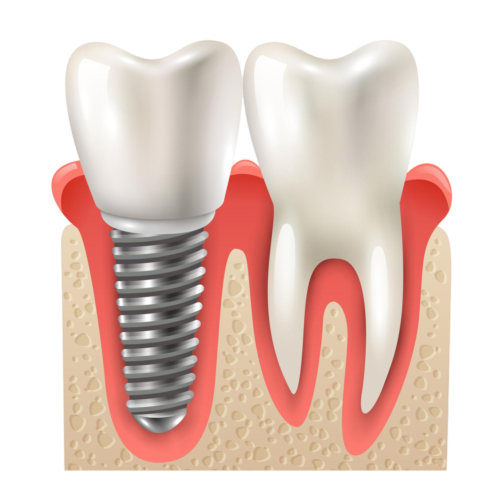
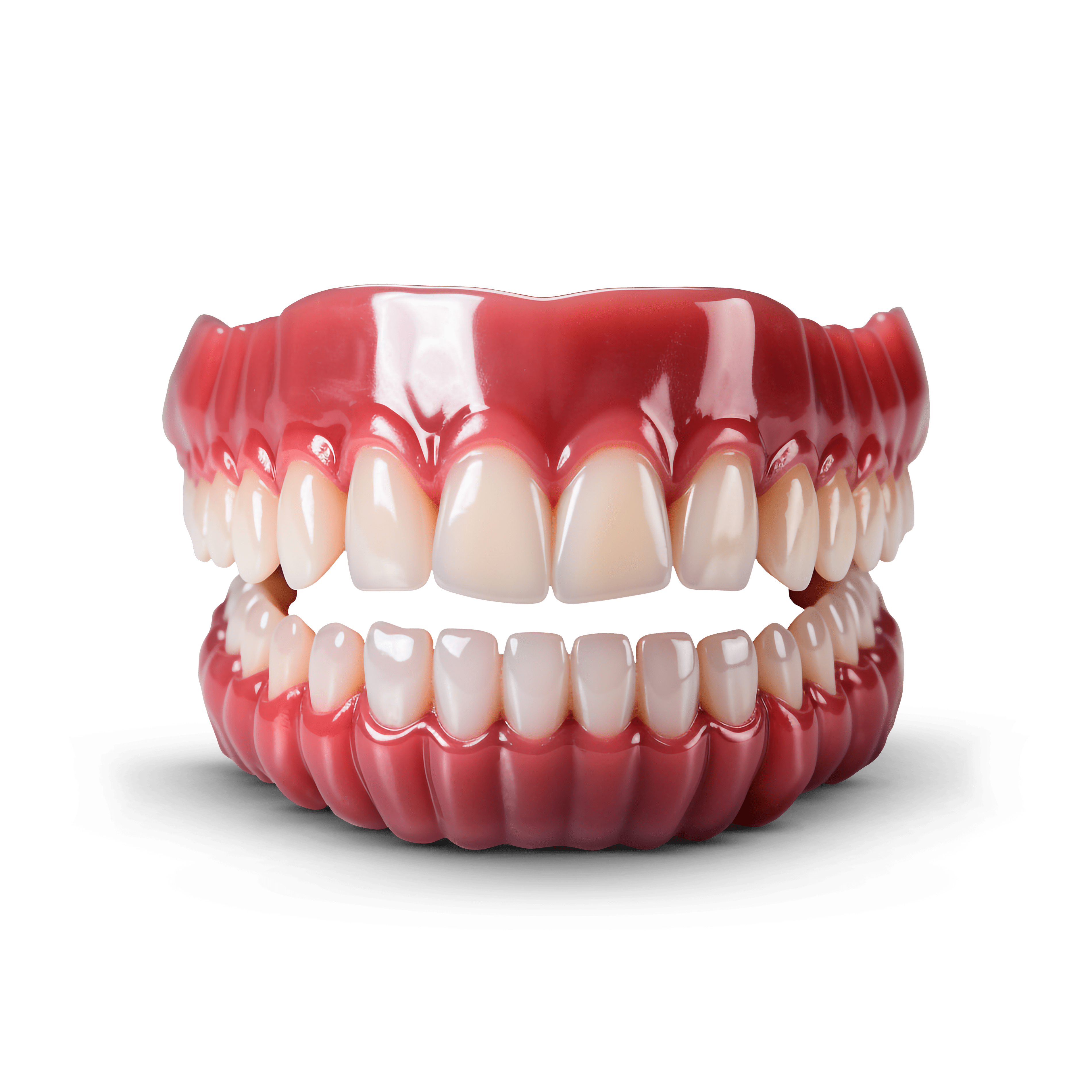
Visits to the dentist include more than just “checking teeth.” While patients who wear dentures no longer have to worry about dental decay, they may have concerns with ill fitting appliances or mouth sores to name a few. Annual visits to the dentist (or sooner if soreness is present) is recommended. During these visits, an oral cancer screening and head and neck exam will be performed as well as an evaluation of the fit or need for replacement of the existing appliances. Regular visits can help you to avoid more complicated problems down the road.
Dentures may replace all or only some of the teeth. The dentures that replace all the teeth are known as complete dentures and they rest on the gums that cover the jawbones. The stability and retention of these dentures can be improved by attaching them to dental implants. Dentures that replace some but not all of the teeth are known as partial dentures. They attach to the teeth that are still present and also cover and rest on the gums and bone where the teeth are missing. Dental implants can also be used to restore and stabilize partial dentures as well.
Complete dentures are dentures that will be replacing teeth for people who have lost all of their natural teeth in both upper and lower jaws, or have lost all of their natural teeth in either their upper or lower jaw. Partial dentures are dentures that will be replacing teeth for people who are missing one or more teeth in upper or lower jaws, and will be only replacing the teeth that have been lost.
The term “permanent dentures” is deceptive and misleading. As we know, most things in life are not permanent, teeth and dentures alike. “Permanent dentures” are retained by screws or dental cement onto dental implants and cannot be removed by a patient; they can only be removed by your dentist. Eventually even these “permanent dentures” may wear or break or become stained and discolored and will require replacement. Typically, soreness should be resolved within two weeks; if it persists, likely something in the denture needs to be adjusted. You should see your dentist as soon as possible.
Typically, new dentures take 4 to 5 weeks to make. One appointment is usually scheduled per week but this may be adjusted to allow for patients who are looking to have their dentures quicker than within the typical 4 to 5 week period.
Most patients need to learn how to use dentures properly and as a result, it takes a little time to get used to them. After a while, you should be able to eat fairly normally, but it may take more time to get comfortable with harder foods or sticky foods. Using a small amount of denture adhesive (no more than three or four pea-sized dabs on each denture) may help stabilize the dentures and help hold them in place while you learn how to get comfortable with them and may make the learning process easier.
Chewing gum: Dentures and chewing gum do not usually work well together, no matter which brand of chewing gum you decide to try. The gum typically sticks to the acrylic plastic in the denture and may break a seal on the dentures, which will loosen them as a result. Gum may remain stuck to the denture and eventually harden and discolor. Ultimately, if you wear dentures, you should avoid chewing gum.
Dentures can help you look your best! They will support your facial muscles, reduce fine lines, and fill empty spaces left by missing teeth, giving you a more youthful appearance. The distance between your upper and lower jaws can be over closed when teeth are missing, giving your face a collapsed and prematurely aged appearance. Dentures can re-establish the positioning of your jaws so that your facial structure will be restored.
At first dentures can feel like you have a lot in your mouth. This will change as you become accustomed to your new dentures. Patience is key when getting used to your new teeth. Biting and chewing will be slightly different with new dentures even if you have been a denture wearer for a long time. We recommend soft foods chewed slowly in small bites for the first few days of having your dentures. Gradually introduce harder textured foods as you become more accustomed to your denture teeth.
With new dentures speech may be initially affected. This is typical as your mouth gets used to the new ‘feeling’ in your mouth. Tongue, lips and cheeks will adapt to this new situation, but it may take some time. We recommend talking a lot, reading aloud, and practicing mouth movements to assist you with the adaption phase. With practice the tongue, lips and cheeks will learn to relax and speech challenges will correct themselves.
When you’re first fitted for new dentures, it’s normal to experience minor irritation, which should fade as your mouth becomes accustomed to them. The period of pain varies. If you’ve previously worn dentures and now have a new set it may take longer. Similarly, if you had some natural teeth present that were removed at the time of the new dentures, the areas where the extractions were performed may be painful or uncomfortable for up to several weeks after the removal of the teeth. Regular visits to your dentist to adjust the dentures as you go through the normal healing process are recommended
In most cases, the lower denture is much less stable than the upper denture. This is due to the shape of the gums on the lower ridge and movement of the denture caused by the tongue. Ask your dentist about supporting your lower denture with dental implants. Implants can be used to stabilize and retain the lower denture allowing you to chew more efficiently and feel the confidence of knowing that your denture will stay in place.
If you had implants inserted, it sounds like the implants were intended to help stabilize the denture, in which case, they should reduce the movement. If your dentures rub your cheeks or if you’re biting your cheeks, you should return to the dentist who made the dentures to continue to have the fit and bite refined. You should visit your dentist to remedy these difficulties.
Research shows that once the teeth are removed, the jaw bone shrinks and changes shape. Typically, dentures should be checked every year, and often they should be remade when they lose their fit and are loose in your mouth after 5-10 years of use. By using dental adhesive, you may have masked the loose fit of your dentures. Even though you have adapted to these dentures, you are not receiving the function and appearance you deserve. Also, it is important that you take your dentures out at night to allow your gum tissues to rest and decrease the possibility of sore spots.
Relines of dentures should improve the fit of the base of the denture to the jaw. However, if your jaw has been without natural teeth for some time, it may be difficult to make the denture stable if there is little jawbone. Soft tissues beneath dentures can also become easily irritated by wearing dentures continually (24 hours a day). You should refrain from wearing dentures at night as this gives the skin a chance to recover from wearing them during the day. Your dentist should make sure that the skin inside the mouth is healthy and take steps to treat it properly before relining. If there is enough jawbone available, relines can often be done well. If not, it may be necessary to revisit the need for either remaking or redesigning the denture.
Generally the fit, function and appearance of your dentures are at their best during the first 2 to 3 years. Just like other parts of your body, your mouth changes over time. After 2 to 3 years, your dentures can start to feel loose. This is due to resorption (shrinking of your jaw bone and gums associated with tooth loss over time). Denture teeth wear with use, and worn denture teeth can adversely affect the ability to chew effectively, impacting on digestion. Poor digestion can result in flatulence, irritable bowels, constipation, acid reflux, and changes in diet to less nutritious, softer foods. Your jaw function can also be adversely affected due to a poor ‘bite’, which can contribute to headaches, sore mouth, sore jaw, and altered physical appearance, Worn teeth can also place uneven stress on your denture, possibly resulting in denture breakage. Consideration for replacement dentures should be between 5 years and 7 years.
Denture relines every 2 to 3 years can help to restore the fit of your dentures, thus extending their longevity. Most insurance plans that cover dentures, cover relines every 2 years, as it is expected there will be changes to your mouth. While relines improve the fit for dentures they will not change the affect of wear on denture teeth or improve denture appearance as a result of wear. To determine what your needs are and treatment options for you and your dentures, we recommend you have your dentures assessed at Battell Denture Clinic, and take part in our Annual Recall Program.
Adjusting to dentures can take patience and perseverance. Facial and mouth muscles may have adapted to old dentures in your mouth, natural teeth that may have been compromised, or missing. It takes time to adapt to dentures, particularly if you are wearing them for the first time. How long it takes to adapt is different from one individual to the next. Your mouth is not the same as your friend’s or a family member’s. Some people adapt to dentures in their mouth in days, others can take weeks or even months to feel comfortable.
Dentures are a good replacement for natural teeth but can never truly duplicate the way natural teeth are secured within the bone, have sensation, or feel like ‘your own’. The good news is the mouth is extremely adaptable and with perseverance your dentures can feel better in your mouth.
It takes time to get used to something new, particularly in your extremely sensitive mouth. Even if you have worn dentures for years, new dentures will require some adjustment time as they settle in your mouth. Dentures sit on soft tissue, and bone and compression of these tissues can sometimes cause sore spots that require relief. Adjustment appointments following denture placement are common. New dentures often feel ‘bigger’ because the tooth surfaces have been restored and are no longer worn like your old ones. These restored surfaces will allow you to chew more effectively and will have an approved and more natural appearance.
While dentures are fabricated with materials intended to endure the forces of chewing, they wear over time. Breakage is inevitable with a worn denture and breakage can occur by accident. Most denture repairs can be completed the same day.
Use of ‘super glue’ is not recommended to repair dentures, even in the interim, as they contain harmful chemicals that can be toxic to the human body.
Always keep your old dentures when you have new ones made. These ‘spare dentures’ come in handy when your other dentures are in for repair. Your ‘spare’ dentures may not fit the same, but you will not be without teeth while your repair is completed.
- Brush the denture using a denture brush, warm water and a denture cleaning paste or mild detergent. Pay extra attention to spaces between the ‘teeth’ and the areas that come in contact with the gums.
- When brushing your lower denture be sure to hold it in the middle. Accidentally squeezing both sides together can cause breakage.
- Do not use toothpaste on your new denture. Toothpaste is an abrasive and will scratch and dull the shine of your denture.
- When cleaning your denture, place a towel in the sink, or fill the sink with water, so it will be cushioned if dropped.
- Gently brush your gums, use a tongue scraper to remove debris and clean the roof of your mouth with a moistened super soft toothbrush as this will help stimulate blood circulation, tone gum tissue and promote healing.
- Rinsing your mouth with mouthwash periodically will helps minimize bacteria and help to keep your breath fresher.
- A denture should be removed each day and placed in a covered container with a denture soaking cleanser that kills bacteria. Follow the manufacturer’s recommendations for the denture cleanser to determine how long your denture should be soaked. Soaking a denture overnight is optional with some denture cleansers. This keeps a denture clean, and also gives the supporting tissues in your mouth a chance to rest.
- Thoroughly rinse your denture in warm running water before inserting it into your mouth after it has been soaking in a cleanser.
- When a denture is not being worn, it should be placed in a covered container filled with water to prevent drying out and possible dimension changes of the denture base material.
- Daily cleaning of your dentures is necessary to prevent plaque and calculi (tartar) buildup, food stains, bad breath odors, mouth infections and redness or irritation to your gums.
- Thick, ropey saliva (due to medications, dry mouth) and certain foods (red wine, berries, coffee, tea, tomato sauces, curries) can contribute to denture stains. Rinsing your mouth and dentures following meals will help reduce staining and debris build-up on your dentures. Stay with a routine of soaking your dentures in an approved cleanser, followed by brushing to help keep denture stains and debris to a minimum.
- Whitening: It is not possible to whiten dentures like natural teeth because dentures are made of plastic. Rinse and brush your denture(s) after meals.
Sometimes it can be hard to clean the entire surface of your teeth and remove all plaque. Pockets of teeth and gum at the back of the mouth or on the inside, next to the tongue, don’t get a proper scrub, leading to the buildup of bacteria.
During a dental cleaning, your dentist targets these problem areas, removes any plaque or tartar using special cleaning tools, and leaves your mouth feeling fresh and clean. The great thing about dental cleaning is that it helps to prevent gum disease and tooth decay by removing more of the plaque and bacteria in your mouth.
How often you get your teeth cleaned per year depends on your particular mouth and circumstances. People who do not have a history of periodontal disease typically have their teeth professional cleaned twice per year. Those who do have a history of gum infections may want to attend professional cleanings more often.
Dental hygienists use a tool called a scaler to remove plaque and tartar from between your teeth and around your gums. The scaler makes a scraping noise, but that’s just the way the tool works: it’s different from a brush. Sometimes a brush isn’t enough to remove plaque that’s stuck to your mouth, and so dentists must use special tools.
While professional teeth cleaning can help to keep your mouth and gums free from plaque and tartar, you need to take an active role in prevention if you want to stop gum disease and tooth decay. Both brushing and flossing morning and night can help prevent plaque from sticking to the teeth and gums and hardening into tartar.
The answer depends. If your teeth are covered in a thick layer of plaque and tartar, then the answer is yes, your teeth will look whiter. Teeth cleaning removes the gunk and reveals the natural colour of your teeth. If, however, your teeth are stained, then this will continue to affect their whiteness. Only whitening treatments can help to make your smile more brilliant.
- Yes, dental cleaning has plenty of benefits. Here are just a few:
- Lower risk of dental pain. When teeth and gums become infected by bacteria, it causes pain and swelling. Sometimes dental pain can be extreme: it’s something that you want to avoid. While regular brushing and flossing are essential, sometimes you need professional cleaning to ensure that you remove all of the plaque that could generate infection.
- Protect your gumline. Sometimes it’s difficult to brush every last area of your mouth. There will always be pockets that you don’t reach. Dental cleaning helps to remove plaque and tartar around the gum line, preventing your gums from receding.
- Eliminates the need for deep cleaning. Deep cleaning is a more involved procedure that often requires going beneath the gum line to remove plaque and bacteria. If plaque and tartar are left to build up, you may need additional interventions, such as tooth replacement, gum grafting, and bone grafting.
Your teeth might look healthy, so how do you know if you need a dental cleaning?
- Loose teeth. Loose teeth are usually a sign that the bone that holds and the tooth and the surrounding gum have withered away due to infection. Loose teeth, therefore, is a sign that you need regular cleaning to prevent further damage.
- Bleeding gums. Bleeding gums are one of the first signs of plaque buildup.
- Bad breath. Bad breath that won’t go away is often a sign of deep-seated infection.
- Pain when you eat. Bacteria can weaken the structures that hold your teeth in place make chewing painful.
- Receding gums. Your teeth look longer as bacteria eat away your gums.
- This is false. During a cleaning at the dentist’s office, it can feel like teeth are being damaged or over-scraped. The scraping sound and sensation of the cleaning tool can also be uncomfortable. After a cleaning, teeth can also feel more sensitive to hot and cold as well as liquids and food. But these sensations are not an indication that tooth enamel has been damaged or scraped off.
- Dental cleanings remove plaque and calculus that won’t come off with daily brushing. When the tongue touches a newly cleaned teeth, it feels different because the build-up of plaque and calculus (and not enamel) has been removed from the tooth surface. Sensitivity after a cleaning is the result of areas previously covered by plaque and calculus being exposed. While the sound and sensation of scraping can be unnerving, this is normal.
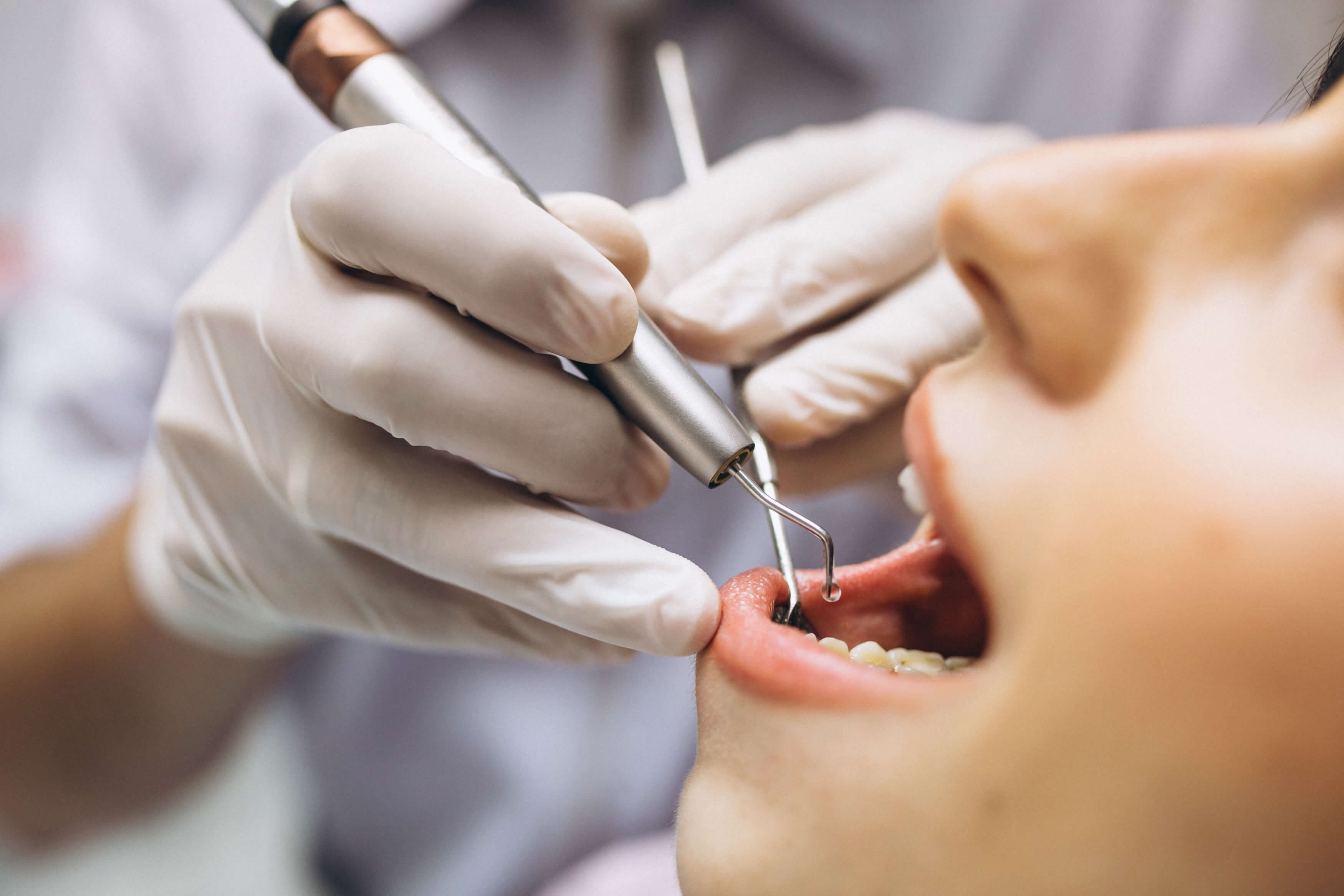

A smile design is a dental procedure which artistically creates straighter, whiter and beautiful natural looking smiles. Smile designs can do wonders to fully restore your dental health and appearance regardless of the original state of your existing teeth.
- A smile designer revitalizes your smile in a longer lasting way than Botox or other temporary measures. A smile design is an overall important investment in your overall appearance.
- Age decreases our smile due to wear, chipping and discoloration. This can happen gradually and can be very embarrassing. Smile enhancement can get you smiling again.
- Dr. Yakin will work with you to customize and plan your smile design. A free consultation is arranged to make sure you achieve your cosmetic dental goals and to resolve your underlying dental problems.
- The timeline is planned so as to minimize the number of appointments and to make sure your smile is completed in time for your special social function (wedding, engagement, wedding anniversary, graduation, etc.).
- All other dental diseases are treated first including dental hygiene visit.
- Patients are encouraged to bring with them photos of when they were younger or photos of their favourite smile from actors and actresses.
- The LVI smile catalogue is used to discuss with the patient the arrangement of teeth, their choices in tooth position and what effect this has on their overall appearance.
- A plan is in place before any teeth are prepared.
- No two cases are alike. Dr. Yakin creates a customized smile especially for you.
- Some smile designs only require Porcelain Veneers
- Other smile designs will require a combination of Porcelain Veneers and Porcelain Crowns. Porcelain crowns are chosen when teeth are weak such as endodontically treated teeth or teeth will large old restorations (like large old crowns).
- Sometimes teeth are missing in the smile zone. This then required either a porcelain bridge with an ovate pontic or an implant with a Porcelain crown.
- Multiple missing anterior teeth may require multiple implants or an implant supported denture to make the completed smile designs.
- If too much gum tissue is showing or the gums are uneven when the individual smiles, then a “gum lift” is done with lasers to reduce the amount of gum showing.
- If only a few teeth are veneered, then the other teeth are whitened before the smile design is completed. This makes sure that the smile is enhanced and brightened.
- An individual that wants to look younger. A smile design can take years off of your appearance.
- An individual that wants to have more confidence when they smile.
- An individual that cares how they look and wants to make an investment into their dental health • An individual that wants to be more appealing to members of the opposite sex. It is a known fact that 96% of adults believe that an attractive smile does this.
- An individual that wants to improve their chances for career advancement or success. It is a known fact that 74% of adults feel that an enhanced smile will allow for a more successful career
- An individual that wants to be noticed and appear healthier.
- An individual that takes care of their teeth with regular dental checkups and good dental hygiene.
- Anyone that wants to invest in their dental health and in their overall future.
A bright, healthy smile is a thing of beauty. If you are unhappy with the look of your teeth, don’t hide them away! Embrace your best smile with the help of Smile Design at Old Town Smiles.
Gapped teeth can be addressed with veneers, cosmetic bonding, or Invisalign. Patients can address gaps due to missing teeth with dental implants for long-lasting, natural-looking results.
The length of a smile design procedure will range based on the chosen procedures. In-office teeth whitening or imprints for Invisalign can be completed in under an hour. Patients also have the option of combining a hygiene cleaning or a gum disease exam with their Smile Design treatment plan. Smile Design procedures may be performed over multiple appointments for the sake of patient convenience or they can be combined into a longer, comprehensive procedure.
Smile Makeovers are often broken into two stages. Patients will attend a first appointment where impressions for any moulds will be taken. If veneers or crowns will be placed, a temporary veneer or crown will be introduced to give patients a sense of what their results will look like. The majority of dental work is usually performed during a second appointment. Dental implants, veneers, bonding, crowns and all other work is often combined into a single session. Patients who pursue a larger-scale Smile Makeover may have their work performed over a second and third appointment for the sake of comfort. Patients will be kept 100% pain-free during these procedures with their preferred comfort method.
This is not an issue in general but does depend on the type of Cosmetic procedure planned. Smokers do have an increase in periodontal disease or gum disease. Smoking can also limit teeth from becoming whitened. There is an increase failure rate of implants since it increases the risk of osseo-integration to be successful.
Although having a tooth pulled is usually very safe, the procedure can allow harmful bacteria into the bloodstream. Gum tissue is also at risk of infection. If you have a condition that puts you at high risk for developing a severe infection, you may need to take antibiotics before and after the extraction. Before having a tooth pulled, let your dentist know your complete medical history, the medications and supplements you take, and if you have one of the following:
- Damaged or man-made heart valves
- Congenital heart defect
- Impaired immune system
- Liver disease (cirrhosis)
- Artificial joint, such as a hip replacement
- History of bacterial endocarditis
People can have teeth extracted for all kinds of reasons.
- Impacted and infected wisdom teeth. Wisdom teeth are molar-like teeth that erupt at the back of the mouth, often in the lower jaw and, sometimes in the upper. Not all people have wisdom teeth: they are “vestibular,” meaning that they helped our ancestors in some way but are no longer essential for our survival (hence why you can have them out). Wisdom teeth, unfortunately, don’t always emerge properly. Sometimes there’s not enough space at the back of the mouth to house them, and they can push into the surrounding teeth, opening up pockets in the gum that get infected. Often, the only solution is to remove them to avoid repeat infections.
- Decayed teeth. Sometimes, teeth can decay to the point where they can no longer be saved — removing them allows the dentist to fit replacement teeth in the form of a denture or crown.
- Acid damage. Stomach acid can erode teeth down to the gum to the point where they do not provide an adequate biting surface.
- Dental trauma. Physical injury can damage the crown of the tooth (the part above the gum) to the point where the entire tooth needs to be removed and replaced.
- There’s not enough room in your mouth for the tooth to emerge
- A tooth is causing repeated gum infections (periodontitis)
- A tooth has been damaged beyond repair in an accident
- The tooth is decayed and causing you pain
- The tooth no longer provides you with a functioning biting surface
Sometimes you need a tooth extraction immediately. If you’re searching for an emergency tooth extraction near me, get in touch with Dental Care of Stamford for the help you need
Believe it or not, some bleeding after tooth extractions is beneficial; good blood flow usually means good healing. The purpose of the gauze that you were given is to apply firm, consistent pressure to the extraction sites for 30-45 minutes at a time. If you have gauze in your mouth and you are not biting down firmly, the gauze is doing no good. Likewise, taking the gauze in and out every five minutes to look at it just tends to stir up more bleeding. Often, when patients are removing their gauze after surgery, they are surprised at how wet and red the gauze appears, and this is often perceived as excessive bleeding. Most of the time, the gauze is saturated with saliva with a few drops of blood that give it the appearance of a lot of bleeding when it really isn’t. If you run out of gauze, most pharmacies sell it or you can bite on tea bags; the tannic acid in tea helps in clot formation. If your mouth is rapidly filling up with blood and the above measures are not helping to slow down the bleeding, call our office for assistance. Also, it is not unusual to notice small episodes of bleeding for several days after having teeth removed. If this occurs simply bite on gauze again in the area of bleeding.
Change your gauze every thirty minutes until the bleeding in that area has stopped. It is recommended that you wet the gauze, squeeze out the excess water, and then apply firm bite pressure to surgical site. If there is no bite pressure on the gauze, then bleeding will not be controlled. Once bleeding stops, there is no need for gauze.
Yes, in most instances, the stitches are placed at the time of surgery simply to assist with initial control of bleeding and clot formation. This is especially true with wisdom tooth surgery and other tooth extractions. Thus, loss of a stitch is not considered an emergency, even if it occurs on the day of surgery. If your surgeon has performed a bone-grafting procedure and the stitches are coming out prematurely, please contact our office so that the doctor may determine whether or not you need to be seen on that day.
We cannot allow more than the patient alone into the surgical area. Under HIPAA, there is a need to maintain patient’s privacy, therefor only the surgical staff and the patient is allowed in the surgical area. There are also multiple procedures occurring and there is no “waiting area” in the surgical suite. If there is a medical/legal necessity to have someone with the patient, please include this information in the initial exam so preparations can be made.
At the time of your exam, your surgeon should go over what you can and cannot take. In most cases, you will continue your normal home medications as prescribed without alteration. If you have additional questions, call the office to confirm before your surgery date.
You can eat as soon as you get home. We recommend starting with soft, light foods such as soups, mashed potatoes, and apple sauce. Make sure the food you eat is not HOT, as you will be numb and unable to feel if your tongue or lip has been burnt.
We suggest that you take the rest of the day to rest, particularly if you have been sedated intravenously. Many people can feel tired and should not be allowed to drive or exercise for 24 hours after sedation. For wisdom tooth extraction, it can take several days to fully recover. If dry sockets develop, the healing period will be extended beyond one week.
The chemical nicotine is a vasoconstrictor, which means that it restricts proper blood flow which hinders nutritional blood from the surgical site, impairing healing. The smoke dehydrates the mouth, and also brings into the mouth smoke debris which can infect the surgical site. This inability to properly heal can lead to a dry socket or infection.
The term “dry socket” refers to a condition called alveolar osteitis which is a premature breakdown of the blood clot present in an extraction site. Smoking, poor oral hygiene, and over-exertion in the post-operative period can contribute to this condition, but sometimes there is no obvious cause. Typically, a “dry socket” presents itself 3-5 days after the surgery with increased pain, foul odor and taste, and bad breath. This condition is very easily treatable and requires that we wash out the socket and place a medication dressing. This provides pain relief usually within an hour after placement. These medicated dressings typically are replaced every 2-3 days in our office until the condition subsides in one to two weeks. If you are experiencing symptoms consistent with a “dry socket,” the best solution is to call our office when it opens in the morning at 8:00am so that we can arrange to have you seen that day for treatment.
Following an extraction, your dentist will send you home to recover. Recovery typically takes a few days. The following can help minimize discomfort, reduce the risk of infection, and speed recovery.
- Take painkillers as prescribed.
- Bite firmly but gently on the gauze pad placed by your dentist to reduce bleeding and allow a clot to form in the tooth socket. Change gauze pads before they become soaked with blood. Otherwise, leave the pad in place for three to four hours after the extraction.
- Apply an ice bag to the affected area immediately after the procedure to keep down swelling. Apply ice for 10 minutes at a time.
- Relax for at least 24 hours after the extraction. Limit activity for the next day or two.
- Avoid rinsing or spitting forcefully for 24 hours after the extraction to avoid dislodging the clot that forms in the socket.
- After 24 hours, rinse with your mouth with a solution made of 1/2 teaspoon salt and 8 ounces of warm water.
- Do not drink from a straw for the first 24 hours.
- Do not smoke, which can inhibit healing.
- Eat soft foods, such as soup, pudding, yogurt, or applesauce the day after the extraction. Gradually add solid foods to your diet as the extraction site heals.
- When lying down, prop your head with pillows. Lying flat may prolong bleeding.
- Continue to brush and floss your teeth, and brush your tongue, but be sure to avoid the extraction site. Doing so will help prevent infection.
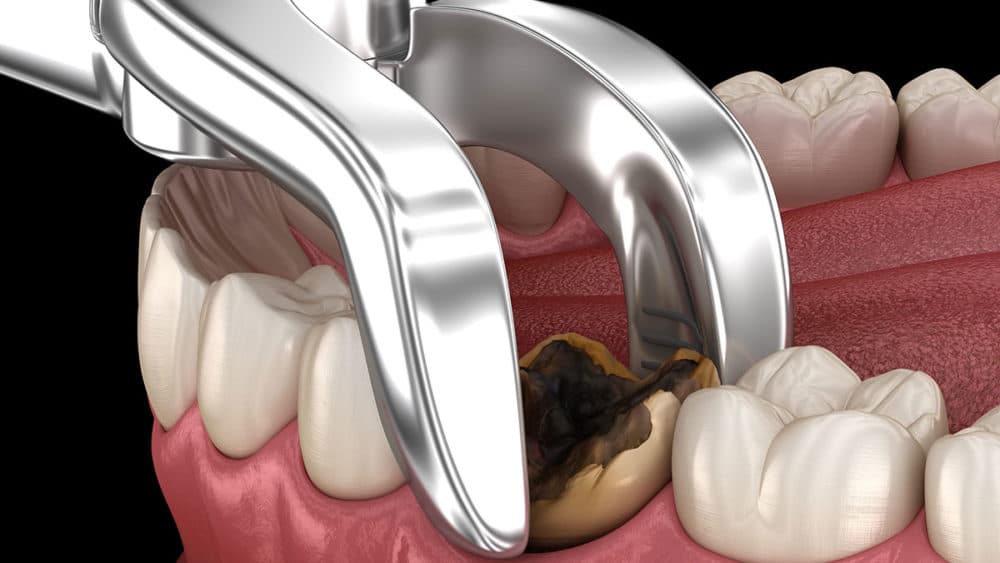
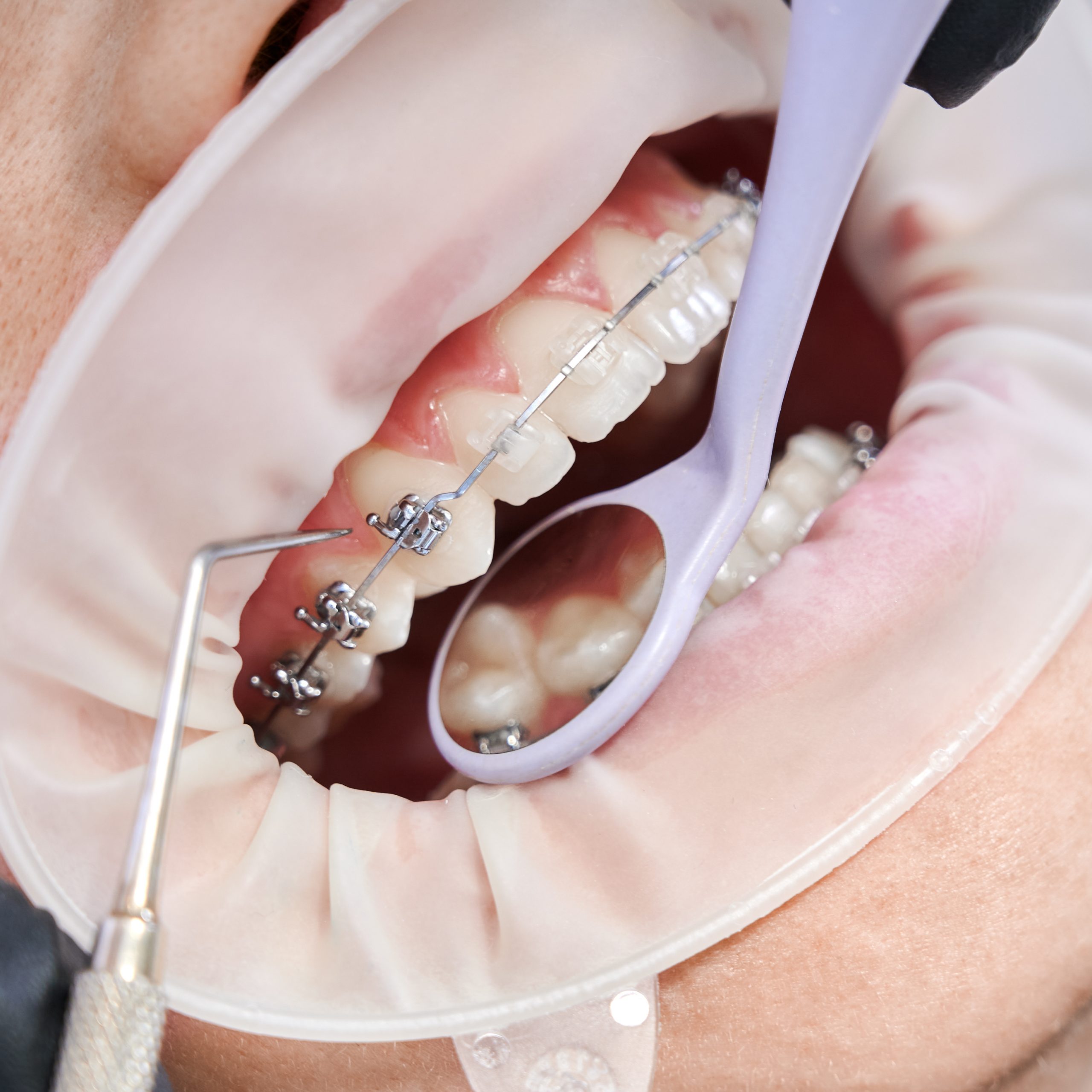
Many factors work to destroy the naturally white smile you were born with. Tobacco, certain foods, and certain drinks actually stain teeth. These substances continually work on our teeth causing our white smile to gradually fade. Hot coffee and tea are especially hazardous to your smile because they change the temperature of teeth. This temperature change – hot and cold cycling – causes the teeth to expand and contract allowing stains to penetrate the teeth. Cutting down on coffee and tea can go a long way to creating a great smile. Foods that are slightly acidic are also dangerous to your white smile. These foods open up the pores of the tooth enamel allowing stains to move more easily into the tooth.
Always spend two to three minutes brushing your teeth. It takes that long to get rid of the bacteria that destroy tooth enamel. Do not brush too hard. It takes very little pressure to remove bacteria and plaque. Floss at least once a day. Flossing is the only way to get bacteria from between your teeth.
Watch the sugar you eat. There is sugar in candy, fruits, crackers and chips. These are the foods that the bacteria in your mouth like best. Be mindful of foods like raisins and peanut butter that stick to your teeth. They can provide a constant supply for the bacteria eating into your teeth. Try to minimize the times during the day when sweet items are eaten and brush your teeth afterwards.
If you cannot brush after a meal, rinse your mouth with water – which can help to remove food from your teeth. Chewing sugarless gum after a meal can also help. Chewing escalates the flow of your saliva which acts as a natural plaque-fighting substance. And do not forget your regular dental visits. Good dental habits will go a long way toward a no-cavity visit.
Fluoride is a mineral that occurs naturally in many foods and in water. Some natural sources of fluoride are brewed tea, canned fish, cooked kale and spinach, apples, and skim milk. Some city water contains fluoride, so by drinking tap water you will acquire fluoride. If drinking water does not have fluoride, supplements are available.
The lack of exposure to fluoride places individuals of any age at risk for dental decay. Fluoride is important to dental health because it helps prevent tooth decay by making your tooth enamel more resistant to acid attacks from plaque bacteria in your mouth.
Studies have shown that children who consumed fluoridated water from birth had less dental decay. Fluoride can reverse early decay and help prevent osteoporosis, a disease that causes degenerative bone loss. Talk to your dentist or dental hygienist about whether you’re getting the daily amount of fluoride you need.
The American Dental Association cites sealants as an effective weapon in the arsenal against tooth decay. Sealants are a thin coating painted on chewing surfaces of molars and premolars. Dental sealants act as a barrier, protecting your teeth against decay-causing bacteria.
Sealants have proven effective with both adults and children, but are most commonly used with children. Despite the fact that sealants are about half the cost of fillings, only a small percentage of school-aged children have sealants on their permanent teeth. Ask your dentist whether sealants are a good choice for you or your children.
Listed below are answers to commonly asked questions about gum disease, such as how it starts and what the early signs of the disease are. Select a question to view the Canadian Dental Association’s (CDA) response.
Fluoride has a positive effect on oral health by making teeth more resistant to decay. Fluoride can also prevent or even reverse tooth decay that has started.
- For many Canadians, fluoride is in public drinking water, which provides protection to the entire community. Fluoride toothpastes and rinses are available for purchase, and your dentist can provide professional fluoride products such as gels and varnish.
Water fluoridation is the process of adjusting the level of fluoride in a public drinking water supply to optimize the dental benefits of preventing tooth decay.
Fluoride is added to public drinking water to protect all members of the community from tooth decay. Community water fluoridation is a safe and effective way of preventing tooth decay at a low cost.
With the exception of dental fluorosis, scientific studies have not found any credible link between water fluoridation and adverse health effects.
For children from birth to 3 years of age, the use of fluoridated toothpaste is determined by the level of risk of tooth decay. Parents should consult a health professional to determine whether their child up to 3 years of age is at risk of developing tooth decay. If such a risk exists, the child’s teeth should be brushed by an adult using a minimal amount (a portion the size of a grain of rice) of fluoridated toothpaste. Use of fluoridated toothpaste in a small amount has been determined to achieve a balance between the benefits of fluoride and the risk of developing fluorosis. If the child is not considered to be at risk, the teeth should be brushed by an adult using a toothbrush moistened only with water.
For children from 3 to 6 years of age, only a small amount (a portion the size of a green pea) of fluoridated toothpaste should be used. Children in this age group should be assisted by an adult in brushing their teeth.
Young children tend to swallow toothpaste when they are brushing, which may increase their exposure to fluoride and contribute to dental fluorosis. For this reason, children need to be assisted or supervised with tooth brushing. An adult needs to ensure that an appropriate amount of toothpaste is used, that the child spits out the toothpaste rather than swallows it, and that the teeth are cleaned effectively.
Fluoride helps make teeth strong and prevents decay. The American Academy of Pediatrics, the American Dental Association (ADA), and the CDC all agree that kids should use fluoride toothpaste for brushing, taking care not to swallow it.
Adults benefit from using fluoride to protect their teeth, too.
Cavities break through the surface enamel of teeth, and they’ll probably get bigger unless you close them off with fillings.
Your dentist will numb your mouth before drilling around the cavity to prep it. A combination of strong materials or a white mix called a composite goes into the cavity soft and then hardens as it dries. You may feel pain or pressure when getting the numbing shot and during the drilling.
Once set, fillings can last a long time but need replacing if they break or wear down.
Sealants protect against cavities that can form in the natural tiny holes and cracks on the outside of teeth. Kids from about 6 to 12 benefit from having sealants painted and hardened onto the chewing surfaces of their back teeth, or molars. Adults can get sealants as well to protect teeth that don’t have fillings.
A fluoride treatment is an effective way to strengthen the enamel of your child’s teeth. It only takes a few minutes to apply. These fluoridated vanishes and gels have a higher concentration of fluoride than can be found in over-the-counter products. Our dental professionals will apply the product that is most appropriate to your child.
There are two types of fluoride treatment, a fluoride varnish and a fluoride gel.
A fluoride varnish is applied with a soft brush. After application, your child should not brush or floss for 4 to 6 hours afterward, and eat a soft diet for the remainder of the day. Drinking can resume immediately.
A fluoride gel takes 4 minutes to apply, and you child should avoid eating and drinking for 30 minutes after treatment.
Stores sell many whitening products, and you can get take-home gels and trays from your dentist, but neither is as strong as procedures done in a dental office.
If you want to try an over-the-counter whitener, look for one with an ADA seal.
Check with your dentist for advice before you buy, especially if you have dental work or dark stains. And don’t keep using them, or you could damage your teeth.
Like other investments, if you whiten your teeth, the length of time you can expect it to last will vary. If you smoke, drink red wine or coffee, or consume other acid-containing foods, your bright smile may begin to yellow more quickly than you expect. In general, a teeth whitening procedure can last up to a few years. And even though the results can fade, occasional touch-ups can be done to regain.
Commercial whitening toothpastes vary greatly in their ability to whiten teeth. They work by removing surface stains from the teeth with the use of mild abrasives. However, unlike professional whitening, some whitening toothpastes do not alter the intrinsic color of the teeth. Toothpastes that are effective in removing stains can also destroy tooth enamel in the process. These toothpastes use harsh abrasives. With repeated use, harsh abrasives begin to damage tooth enamel and can contribute to increased tooth sensitivity. If you would like to try a whitening toothpaste, consult with your dentist first.
Dentists have been doing what’s called “non-vital” bleaching for many years. Non-vital bleaching is done on a damaged, darkened tooth that has had root canal treatment. “Vital” bleaching is done on healthy teeth and has become more popular in recent years.
Vital bleaching, also called whitening, may be carried out in the dental office or the dentist may instruct the patient on how to do the bleaching at home. There is also a wide variety of products for sale in stores. Not all products are the same and not all give you the same results.
Different products, including those used by dentists, may also have different risks and side effects.
Here is an overview:
Whitening toothpastes with abrasive ingredients are really not bleaching products at all, but work on surface stain only. These products are sold in many stores.
Some whitening toothpastes do contain a chemical ingredient (or “bleach”) that causes a chemical reaction to lighten teeth. Generally, they have the lowest amount of “bleach.” They may not whiten as well as stronger products, but they have less chance of side effects. These pastes are brushed onto teeth and rinsed off, like regular toothpaste.
Bleaching kits sold in stores stay on your teeth longer than toothpaste and contain stronger “bleach”. These store-bought products do not come with the added safety of having your dentist monitor any side effects. They also come with a one-size-fits-all tray that holds the “bleach” and is more likely to leak the chemical into your mouth.
Dentists may use products with stronger “bleach”, but they give patients careful instructions to follow. They are also trained to spot and treat the side effects that patients sometimes report during bleaching. In addition, if a tray is needed to apply the “bleach”, dentists supply custom-made trays. Because products used by dentists are strong, they tend to produce the best results.
Patients should be aware that the long-term use of whitening or bleaching products may cause tooth sensitivity or tooth abrasion. Please consult with your dentist before using a whitening or bleaching product.
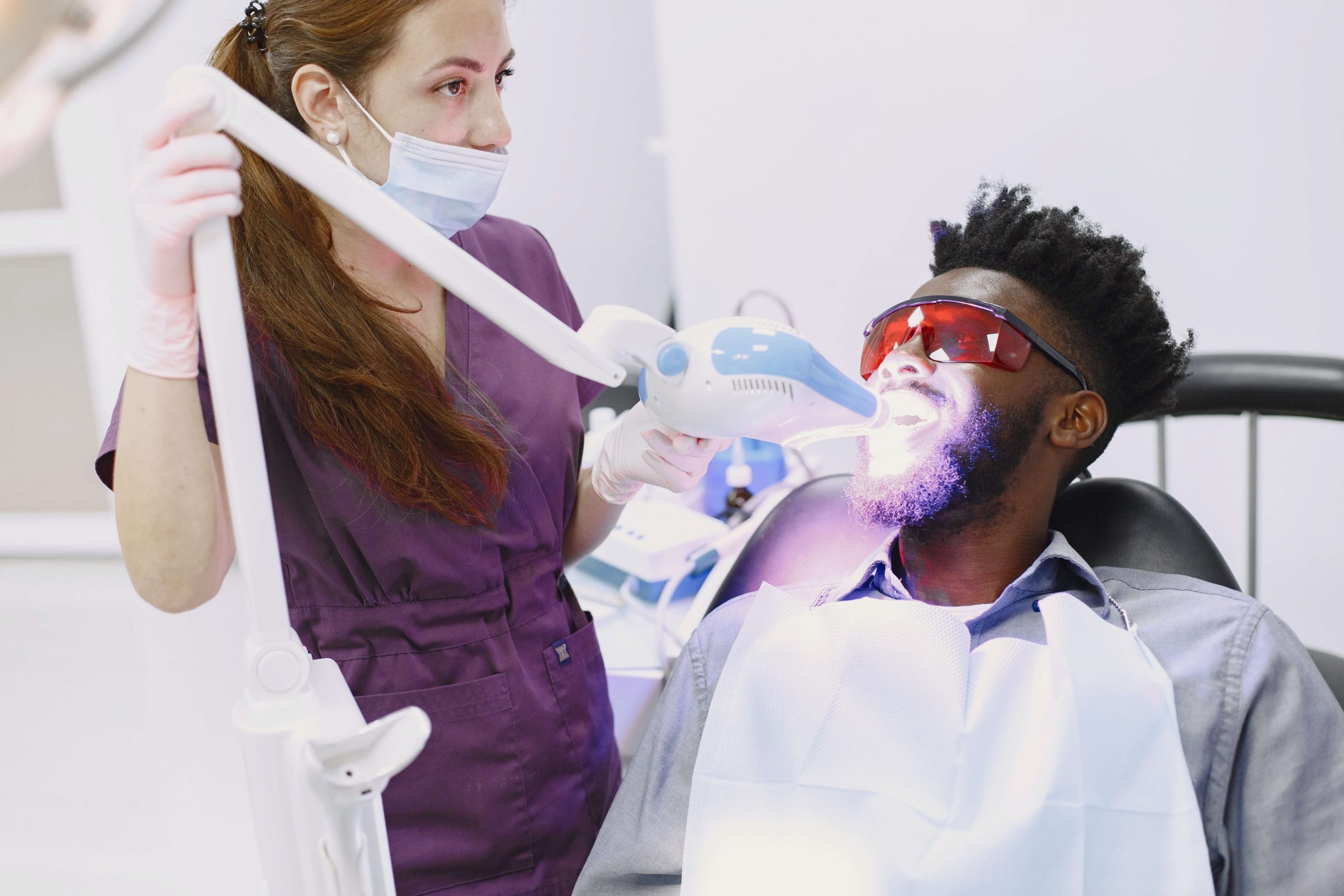
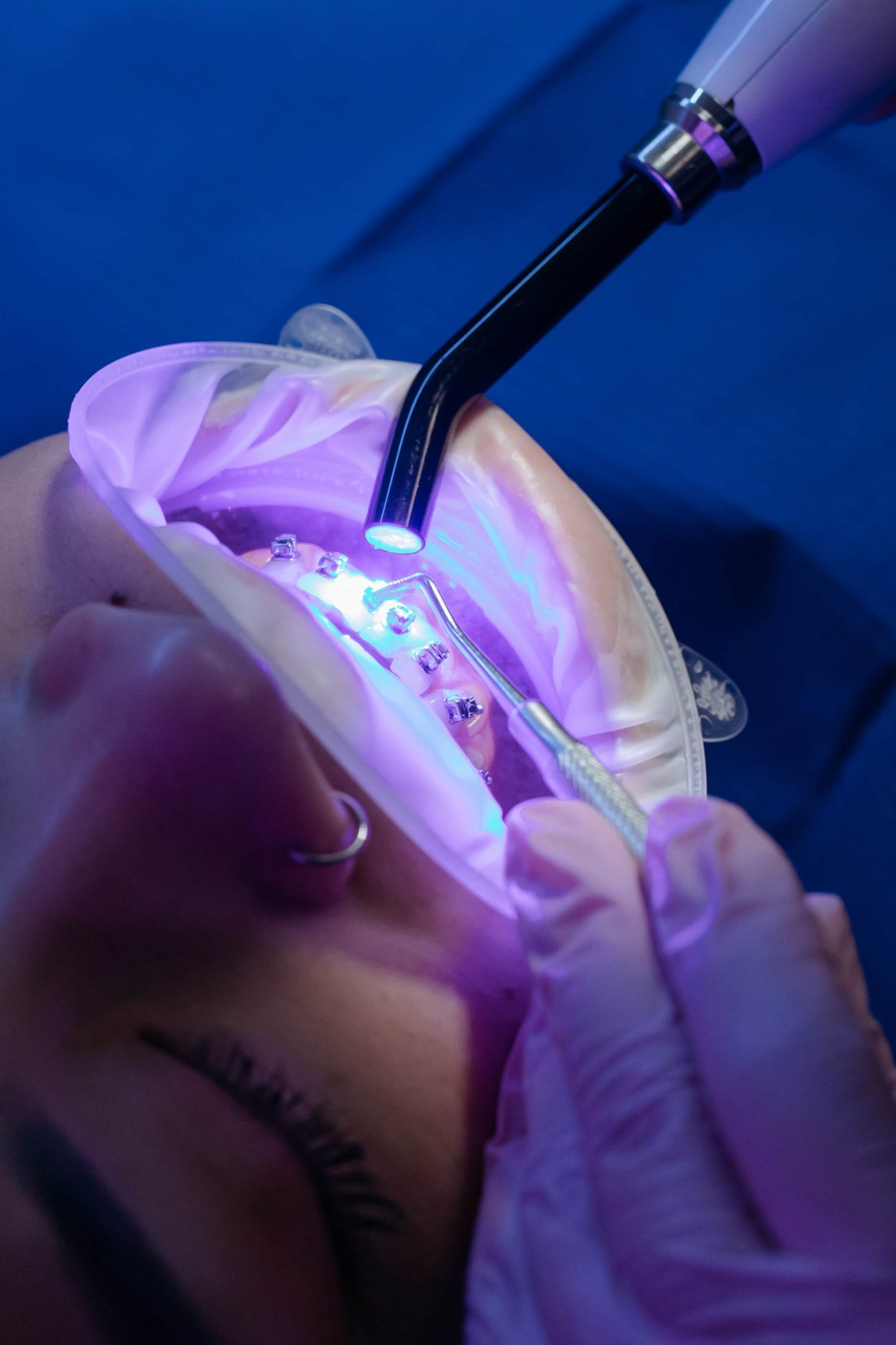
Removing teeth is sometimes required to achieve the best orthodontic result. Straight teeth and a balanced facial profile are the goals of orthodontics. However, because new technology has provided advanced orthodontic procedures, removing teeth is not always necessary for orthodontic treatment.
Treatment time obviously depends on each patient’s specific orthodontic problem. In general, treatment time lasts from 8 months to 30 months. The “average” time frame a person is in braces is approximately 18-24 months.
Generally, braces do not “hurt.” After certain visits, teeth may be sore for a few days. In these situations, pain medications that the patient normally takes will ease the discomfort. However, after most visits, patients do not feel any soreness at all! We often remind our patients, “It does not have to hurt to work!”
The teenage years are already a fragile time for most people. Getting braces during this time can be terrifying. Reminding your child that braces are a relatively short-lived treatment that will make the rest of their life much healthier and better. Starting braces as early as possible is a good way to make sure that they do not have to deal with them as they mature. Also, reminding them that most of their friends are going to be wearing braces at the same time is a good way to encourage them throughout this process.
Playing an instrument or a contact sport may require some adjustment when you first get your braces, but wearing braces will not stop you from participating in any of your school activities. If you play a contact sport, it is recommended that you wear a mouthguard to protect your braces or appliance.
Yes. Once treatment begins, we will explain the complete instructions and provide a comprehensive list of foods to avoid. Some of those foods include ice, hard candy, raw vegetables and all sticky foods (i.e. caramel and taffy). You can avoid most emergency appointments to repair broken or damaged braces by carefully following our instructions.
Yes. Some orthodontic problems are significant enough to require early intervention. However, if a patient is not yet ready for treatment, we will follow that patient’s growth and development until the time is right for treatment to begin.
A surprising percentage of our patients are adults. In fact, 25 percent of all orthodontic patients are adults. Health, happiness, and self-esteem are vitally important to adults. No patient is “too old” to wear braces!
Yes. A tooth with a crown will move just like a tooth with a simple filling. When teeth are missing, orthodontic treatment will aid in the alignment of the remaining teeth.
- Unfortunately, there aren’t many alternatives to braces, but there are alternatives to the metal braces that many people immediately picture. You can get clear or tooth-colored brackets and wires, which make braces much less noticeable. Some patients are also eligible for Invisalign instead of traditional braces. There are also other types of removable appliances that can help align teeth.
- Some adults choose to get veneers instead of braces to serve as a purely cosmetic fix. However, these are quite expensive, may need to be replaced at some point in life, and do not actually correct any bite issues
- There’s no set “best” age to get braces. For most kids, the best time for braces is generally between ages 10 and 14, when a child’s mouth and head are still growing and the permanent teeth are erupting. The exact time depends on growth and on how quickly a child’s adult teeth come in. However, braces can still be effective in older teenagers and adults.
- About one in every five orthodontic patients is over the age of 21 Whether you’re considering treatment for yourself or for a child, any age is a good time to visit the orthodontist.
- Phase I, also known as “early intervention”, refers to orthodontic treatment that occurs before a child has all of their permanent teeth. This usually happens between ages 7-10. Phase I treatment doesn’t always function as a complete replacement for braces – its purpose is to fix problems that are most easily corrected at an early age and to make the Phase II treatment (braces) easier. To put it simply, Phase I takes care of the initial structural (skeletal) corrections so that braces can make more refined (dental) corrections and finish the job.
- Some orthodontic problems like underbites/crossbites, large over bites, severe crowding, severely protruded front teeth, and narrow jaws are easier to correct at a younger age. Early correction often leads to easier and more predictable treatment after all of the permanent teeth have erupted. Early intervention can also decrease the need to extract permanent teeth in the future, correct harmful habits like thumb-sucking, tongue-thrusting, and speech problems, reduce the risk of tooth trauma to protruded front teeth, eliminate the need for later corrective surgery, and reduce teasing caused by abnormally crooked teeth.
- Between Phase I and II, kids may wear a retainer or space maintainer to maintain their progress, and should continue visiting their orthodontist so he or she can check on jaw and tooth development.
- Phase II, sometimes just called “active treatment”, consists of full braces. It’s designed to finish straightening the teeth and correcting the bite once all the permanent teeth have come in.
Some people may get braces for mostly cosmetic reasons but there are also a number of health benefits to straighter teeth. Straight teeth are easier to clean well, which reduces tooth decay and gingivitis. Correcting the bite also fixes many structural problems, which can reduce jaw pain and make chewing less painful.
- ALWAYS remember to brush your teeth after every meal and floss at least once a day.
- Make sure to use toothpaste that contains fluoride, and ask your family dentist if you need a fluoride rinse. This will help prevent cavities!
- If you take out your retainer to eat, make sure you brush your teeth, floss, and remember to keep your retainer safe in its container so that it does not get lost or broken.
- Keep your retainer clean, too, by brushing it gently with a toothbrush and toothpaste. You may also soak it in denture cleaner as instructed by Dr. Willes. Do not put your retainer in boiling water or in the dishwasher.
- During your treatment, try to avoid foods with a lot of sugar, which increases the amount of bacteria that grows in your mouth, and can cause more plaque and potential cavities.
- Avoid sticky and chewy foods (caramel, chewing gum, gummy bears), hard foods (hard candy, nuts, ice cubes), or any foods that could possibly get stuck in your braces (corn on the cob, bagels, ribs, taffy, etc.).
- Be sure to schedule your routine checkups with your family dentist.
